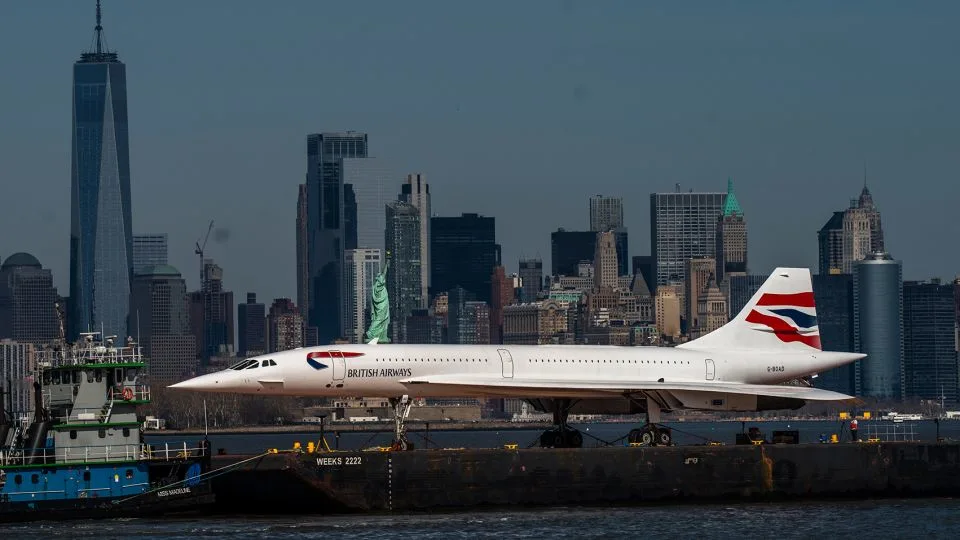The iconic Concorde, the world’s fastest commercial aircraft, recently embarked on a remarkable journey – a leisurely float down New York’s Hudson River. This retired British Airways marvel, one of only 20 supersonic aircraft ever to grace the skies, made its way back to the Intrepid Museum in NYC after undergoing several months of meticulous restoration.
The delta-winged jet, a hallmark of both aviation and maritime history, has been a star attraction at the Intrepid Museum since 2003. Its recent journey involved a barge ride along the Hudson, with an overnight stop in Jersey City, New Jersey. The anticipation grew as the Concorde glided past the cityscape, drawing the attention of curious onlookers.
Intrepid proudly claims that its Concorde holds the world speed record for a passenger aircraft. In 1996, this magnificent bird achieved a mind-boggling 1,354 miles per hour, more than twice the speed of sound, during a flight from New York to London – a mere 2 hours, 52 minutes, and 59 seconds! The aircraft, with the call sign G-BOAD, first took flight in 1976 and even operated jointly by British Airways and Singapore Airlines, donning both carriers’ liveries at different times.
Sadly, the fleet of Concordes gradually phased out after a tragic incident in August 2000, when one of these supersonic wonders crashed shortly after takeoff in Paris, claiming the lives of all 109 people on board. The last-ever Concorde flight occurred on November 26, 2003, marking the end of an era. The aircraft known as Delta Foxtrot now resides in the Aerospace Bristol, an aviation museum in the west of England.
After a beautiful facelift, the British Airways Concorde has returned to its home at the Intrepid Museum. Starting April 4, visitors can once again marvel at its sleek design, relive its record-breaking flights, and pay homage to an era when supersonic travel was more than just a dream.
So next time you stroll along the Hudson River, imagine the roar of those powerful engines as the Concorde defied gravity, leaving a legacy that still captivates aviation enthusiasts worldwide.




Comments
Post a Comment